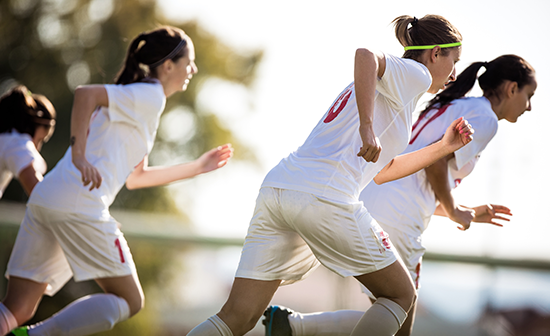“The Decade of Decline: Gender Equity in High School Sports,” a study co-authored by Don Sabo, Ph.D., Director, Center for Research on Physical Activity, Sports & Health (CRPASH), D’Youville College, and Philip Veliz, Ph.D., Post-Doctoral Fellow, University of Michigan, analyzes data from the Department of Education’s Office for Civil Rights (OCR) Data Collection on girls’ and boys’ high school athletic opportunities between the 1999-2000 and 2009-10 school years. This is the second in the “Progress Without Equity” research report series.
Key findings from “The Decade of Decline: Gender Equity in High School Sports” include:
- Athletic participation opportunities expanded across the decade, but boys’ allotment grew more than girls. By 2009-10, 53 athletic opportunities were offered for every 100 boys, compared with 41 opportunities for every 100 girls.
- Despite the level of economic resources, the opportunity gap between girls and boys continued to increase. By 2010 girls participated in greater numbers than in the beginning of the decade; however, girls’ share of total athletic opportunities decreased across the decade as compared to boys’ share. During a decade of expanding athletic participation opportunities across U.S. high schools, boys received more opportunities than girls, and boys’ opportunities grew faster than those of girls.
- By 2009-10 boys still received disproportionately more athletic opportunities than girls in all community settings—urban, suburban, towns, and rural communities.
- In 2000, 8.2 percent of schools offered no sports programs, the percentage nearly doubled by 2010, rising to approximately 15 percent. Additionally, schools with disproportionately higher female enrollments (i.e., the student body is 56 percent female or higher) were more likely to have dropped interscholastic sports between 2000 and 2010.
- Seven percent of public schools lost sports programs between 2000 and 2010, while less than one percent added sports to their curriculum. Given this trend in the data, it is estimated that by the year 2020, 27 percent of U.S. public high schools (4,398 schools) would be without any interscholastic sports, translating to an estimated 3.4 million young Americans (1,658,046 girls and 1,798,782 boys) who would not have any school-based sports activities to participate in by 2020 if the trend continues.
Through this benchmark study, the SHARP Center hopes to inform and educate policy makers on the importance of ensuring that athletic opportunities are readily available to youth at the high school level. The Women’s Sports Foundation worked with the National Women’s Law Center (NWLC) to create relevant, evidence-based policy recommendations based on the report’s findings:
- The Office for Civil Rights should strengthen its enforcement of Title IX in secondary schools to ensure that girls receive equal opportunities to reap the many valuable benefits of playing sports.
- Federal policymakers should require high schools to publicly disclose gender equity data about their athletics programs.
- Urban schools, in particular, should redouble their efforts to increase the numbers of athletic opportunities that they provide to girls.
- All schools should have Title IX coordinators and should regularly conduct Title IX self-evaluations to ensure that they are complying with the law.

